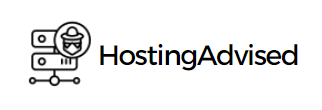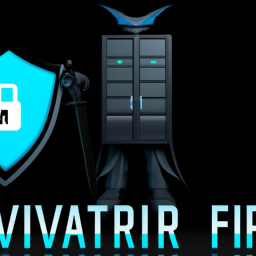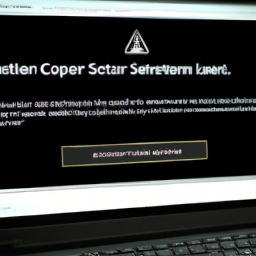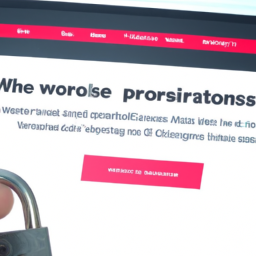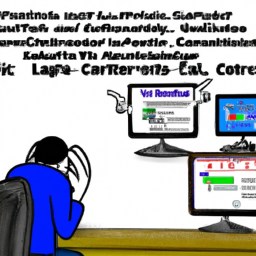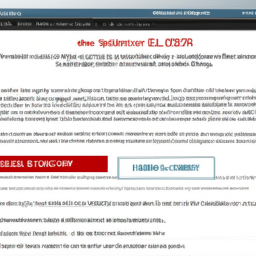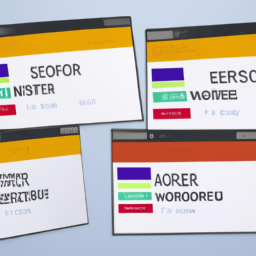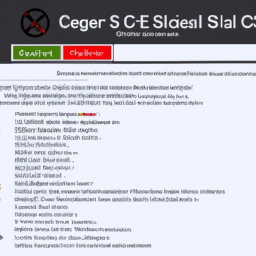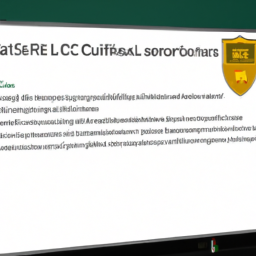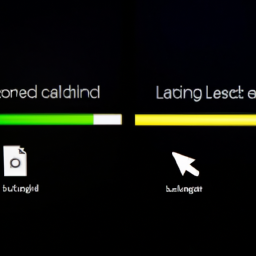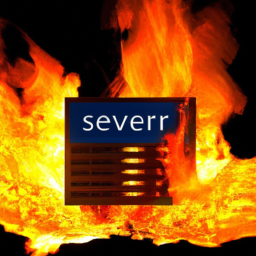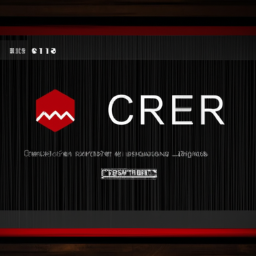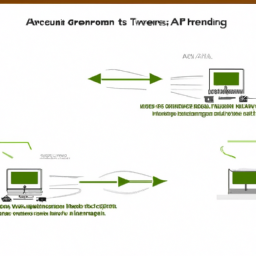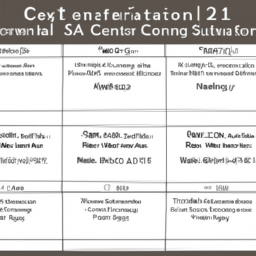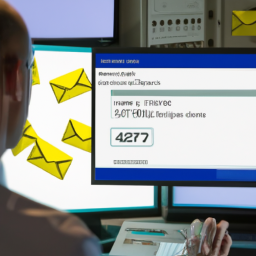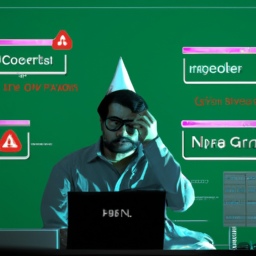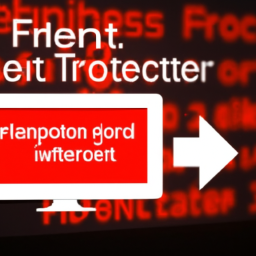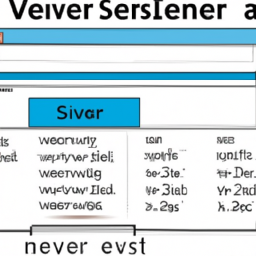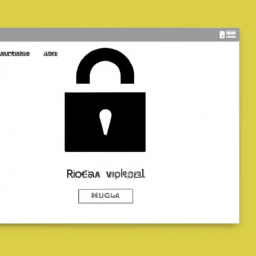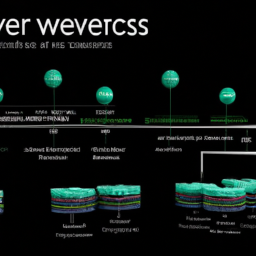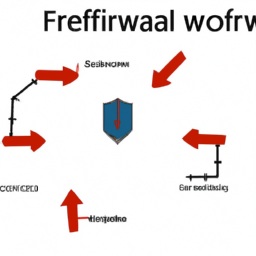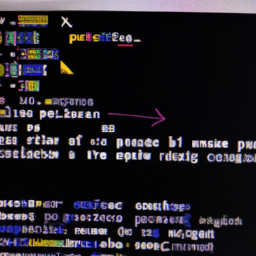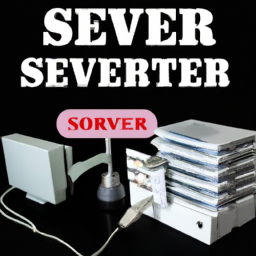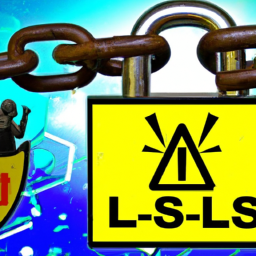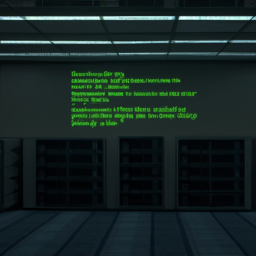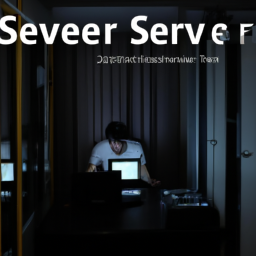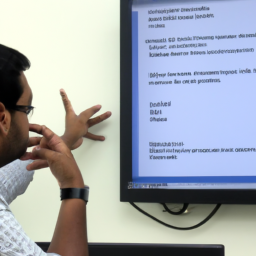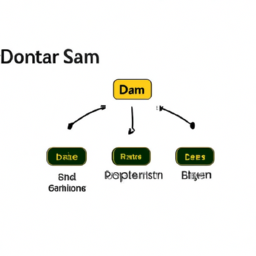In the world of web hosting servers, the adage ‘a chain is only as strong as its weakest link’ holds true. Understanding the risks associated with malware spreading on these servers is crucial for anyone involved in the management and maintenance of websites.
Malware, a malicious software designed to infiltrate and disrupt computer systems, can wreak havoc on web hosting servers if not properly addressed. This article will delve into the common sources of malware on web hosting servers, such as vulnerabilities in server software, unsecured file uploads and downloads, and outdated or insecure plugins and themes.
Additionally, social engineering techniques and phishing attacks will be explored as potential entry points for malware. By adopting best practices for preventing malware infections, web hosting server administrators can enhance the security of their systems and protect their clients’ valuable data.
Key Takeaways
- Web hosting servers are vulnerable to malware due to various factors such as malicious downloads, compromised user accounts, and server misconfigurations.
- Vulnerabilities in server software, including outdated versions and lack of security patches, provide opportunities for hackers to infiltrate servers.
- Unsecured file uploads and downloads can expose servers to malware, but implementing secure file transfer protocols can mitigate this risk.
- Outdated or insecure plugins and themes on web hosting servers can act as gateways for malicious attacks, highlighting the importance of regular updates and maintenance.
Common Sources of Malware on Web Hosting Servers
One of the most common sources of malware on web hosting servers is through malicious downloads and infected files. Malware distribution occurs through compromised user accounts and by exploiting weaknesses in server configurations.
Hackers often target vulnerable user accounts, such as those with weak passwords or outdated security measures, to gain unauthorized access to the server. Once inside, they can upload and distribute malware to other websites hosted on the same server.
Additionally, hackers take advantage of server misconfigurations, such as unpatched software or insecure settings, to infiltrate the system and spread malware. These vulnerabilities provide an entry point for attackers to compromise the server and infect websites.
Understanding these sources of malware is crucial in safeguarding web hosting servers against potential threats and mitigating the risk of infection.
In the subsequent section, we’ll discuss vulnerabilities in server software.
Vulnerabilities in Server Software
Exploiting vulnerabilities in server software can be like finding an unlocked back door into a fortress. Hackers are constantly on the lookout for weaknesses in server software that can grant them unauthorized access to web hosting servers. These vulnerabilities can arise from various factors, including outdated software versions, lack of security patches, and server misconfigurations. To better illustrate the impact of these vulnerabilities, consider the following table:
| Vulnerability | Impact |
|---|---|
| Outdated software versions | Lack of essential security updates, leaving systems exposed |
| Lack of security patches | Vulnerabilities remain unaddressed, increasing risk |
| Server misconfigurations | Incorrect settings that can be exploited by attackers |
These vulnerabilities provide hackers with opportunities to infiltrate web hosting servers and inject malware. To mitigate these risks, it is crucial to regularly update server software, apply security patches promptly, and ensure proper server configurations. By doing so, you can fortify your server’s defenses against potential attacks. Moving forward, we will now delve into the topic of unsecured file uploads and downloads.
Unsecured File Uploads and Downloads
To ensure the security of your server, it’s crucial to address the potential risks associated with unsecured file uploads and downloads. When files are uploaded or downloaded without proper security measures in place, it opens the door for malware to infiltrate your server.
To mitigate this risk, consider implementing secure file transfer protocols, such as SFTP or FTPS, which encrypt the data being transferred and ensure file integrity. Additionally, regularly monitor and scan uploaded files for any signs of malicious code. By doing so, you can prevent attackers from exploiting vulnerabilities in your server through unsecured file transfers.
Moving forward, it’s essential to address the next section about outdated or insecure plugins and themes, which further exposes your server to potential threats.
Outdated or Insecure Plugins and Themes
Ensuring the security of your server involves tackling the potential dangers posed by outdated or insecure plugins and themes. These plugins and themes can act as a gateway for malicious attacks, infiltrating your system like a stealthy intruder.
Plugin vulnerabilities are a common vulnerability on web hosting servers. They provide an easy entry point for hackers to exploit. On the other hand, outdated themes can contain security flaws that have been patched in newer versions, making them susceptible to exploitation.
Attackers can exploit these vulnerabilities to gain unauthorized access to your server, steal sensitive data, or even inject malware onto your website. Therefore, it is crucial to regularly update and maintain your plugins and themes to ensure that they are free from known security vulnerabilities.
By doing so, you can significantly reduce the risk of your server falling victim to cyber attacks.
Moving forward, let’s explore the next section on social engineering techniques and phishing attacks.
Social Engineering Techniques and Phishing Attacks
Beware of the cunning tactics used by hackers through social engineering and phishing attacks, as they aim to deceive and manipulate you into compromising your personal information and putting your online security at risk. These malicious actors employ various techniques, such as email spoofing and spear phishing, to trick you into divulging sensitive data or clicking on infected links.
Email spoofing involves forging the sender’s address to appear as a trusted source, while spear phishing targets specific individuals with personalized messages to increase credibility.
Additionally, social media manipulation and clickjacking are used to exploit your trust in online platforms, leading you to unknowingly download malware or reveal personal information.
To protect yourself, it is crucial to stay vigilant, verify the authenticity of emails and messages, and avoid clicking on suspicious links. By understanding these tactics, you can better safeguard your online security and prevent malware infections on web hosting servers.
Best Practices for Preventing Malware Infections on Web Hosting Servers
Stay on high alert and take extreme precautions to defend your web hosting servers against the relentless onslaught of malware infections. Regular security audits and implementing strong password policies are essential practices to prevent malware infections. Conducting regular security audits allows you to identify vulnerabilities and address them promptly. This involves scanning your servers for any signs of malware, checking for outdated software or plugins, and ensuring that all security patches are up to date. Implementing strong password policies is another crucial step in protecting your servers. Encourage users to create complex passwords that include a combination of uppercase and lowercase letters, numbers, and special characters. Additionally, enforce regular password changes and enable multi-factor authentication for added security. By following these best practices, you can significantly reduce the risk of malware infections on your web hosting servers.
| Best Practices for Preventing Malware Infections |
|---|
| 1. Regular security audits |
| 2. Implementing strong password policies |
Frequently Asked Questions
How can I protect my web hosting server from malware that originates from the client’s end?
To protect your web hosting server from client-side malware, follow these best practices for securing web hosting servers.
Regularly conduct security audits to identify vulnerabilities and implement necessary updates. This ensures that your server is equipped with the latest security measures and patches any potential loopholes.
By staying proactive and vigilant, you can minimize the risk of malware originating from the client’s end and maintain a secure hosting environment.
Are there any specific security measures that should be taken while using third-party plugins and themes?
When it comes to securing third-party software, you better buckle up because it’s a wild ride. Best practices for handling plugins and themes require a meticulous approach.
First, do your research and choose reputable sources. Keep those bad boys updated regularly, or else you’ll be playing malware roulette. And don’t forget to test them in a safe environment before unleashing them on your precious server.
Remember, caution is key in this game of digital Russian roulette.
Can malware on web hosting servers be transferred to other websites hosted on the same server?
Yes, malware can be transferred to other websites hosted on the same server. To prevent this, it’s crucial to implement proper security measures. Regularly update all software and plugins, use strong passwords, and limit access permissions. Conduct regular malware scans and remove any infected files immediately. Implementing a strong firewall and ensuring regular backups are also essential security measures to prevent the transferring of malware.
What are some common signs that a web hosting server has been infected with malware?
If you suspect that your web hosting server has been infected with malware, there are several signs to look out for.
First, you may notice a significant decrease in website performance and a negative impact on user experience.
Additionally, you might encounter strange and unexpected behavior on your website or receive reports of spam or phishing activity.
To address this issue, it’s important to promptly detect and remove malware by conducting regular scans, updating software, and implementing strong security measures.
Is it possible to recover data and restore a web hosting server after a malware infection?
Yes, it’s possible to recover data and restore a web hosting server after a malware infection. Recovering data involves identifying and removing the malware, restoring the server to a clean state, and then recovering any lost or corrupted data using backups or other recovery methods. Restoring the web hosting server requires reinstalling the operating system, reinstalling applications, and implementing security measures to prevent future infections.
Conclusion
In conclusion, understanding the risks associated with malware spreading on web hosting servers is crucial for maintaining the security of your website. By addressing common sources of malware, such as vulnerabilities in server software and unsecured file uploads, you can significantly reduce the risk of infection.
However, it’s important to acknowledge that no system is completely immune to attacks. While implementing best practices can greatly minimize the chances of malware infections, it’s essential to stay proactive and regularly update your security measures to stay one step ahead of potential threats.
